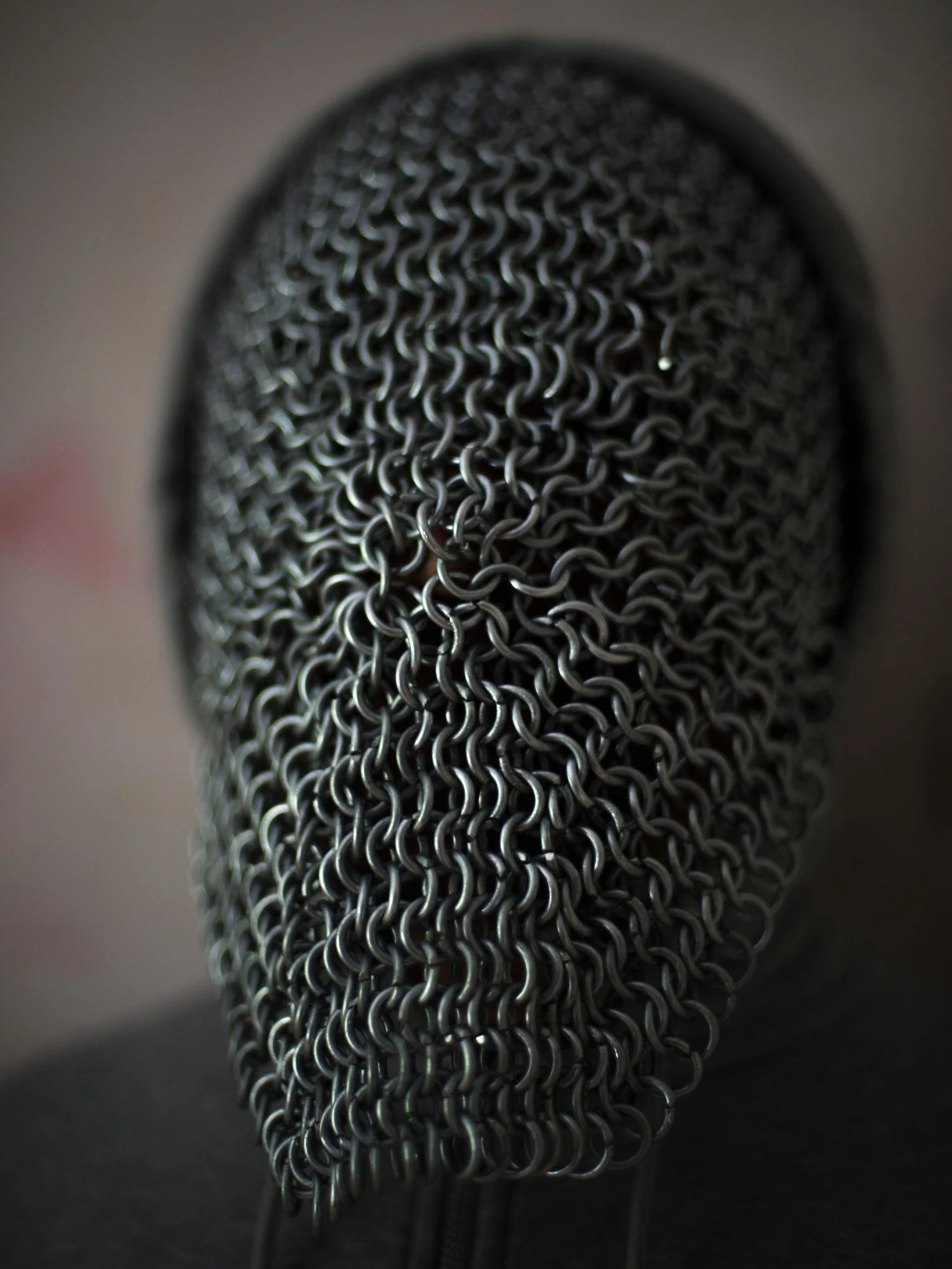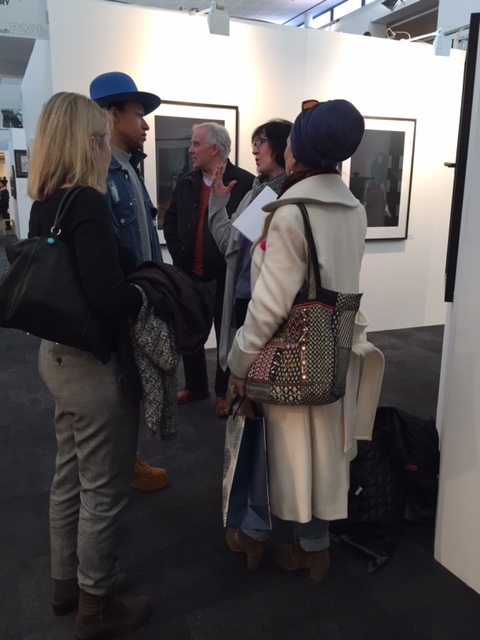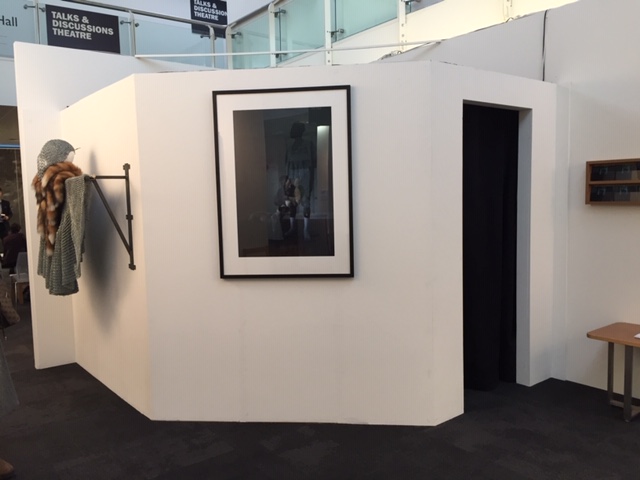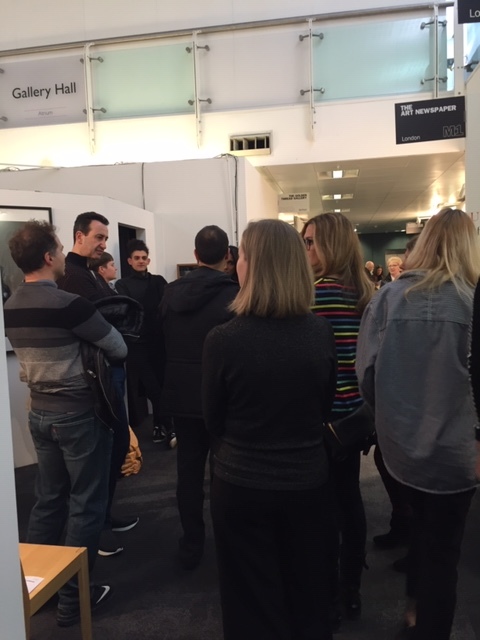The Chainmail Project
by Amartey Golding
18th to 22nd January
Jack House Gallery is at London Art Fair 2017
Stand P20b
Business Design Centre
52 Upper Street
London N1 0QH
Chainmail is a project by Amartey Golding which has at it’s centre a 15 minute film first shown at Jack House Gallery in October 2016. The project plays with recurring themes in Amartey’s work around stereotypes, race, sexuality, gender and our perceptions of what is acceptable to depict, discuss . Chainmail is Amartey’s first foray into film for an artist who has worked more often in the mediums of drawing, painting and printmaking. His ideas are often cloaked in a veneer of technical virtuosity so that in his highly accomplished and superficially ‘beautiful’ drawings the viewer is ‘hijacked’ or ambushed by the sometimes uncomfortable questions thrown up by the imagery depicted. Finding themselves made complicit or compromised by having looked.
HEADLINE - click here ‘Amartey Golding and his Royal Ballet brother deliver London Art Fair showstopper’ - The Art Newspaper LAF 2017
NOTES ON THE FILM by Amartey Golding January 2017
The film follows Solomon Golding (the first black British male to be accepted in to the Royal Ballet Company) as he partakes in a fictional underground ceremony that has been going on since the early 90s in the Black (specifically Jamaican) Communities of London. The Ceremonies take place every month and revolve around men showing off chainmail garments they have painstakingly made. Kudos is given for intricacy, design and overall weight of the chainmail worn.
A starting point for this project came after my godson lost two friends to knife crime within a matter of weeks. The chainmail was a practical solution to this danger and the arduous task of making it became a mourning ritual. From this developed the fictional ceremonies; an inner city tradition focusing on individual development through the creation and use of chainmail garments.
I use this fictional subculture as a way to separate the portrayal of black males in the media and film, from black males living today and to see the portrayed image of blackness (especially black masculinity) as an entity unto itself. The chainmail culture and the narrative it follows, was made to mimic the prominent elements that have come to define the contemporary black identity, such as poverty, 'gang culture', physical strength, performance/showmanship, primal drives of masculinity and the constant threat of violence.
The Chainmail is an important element to the film. Its contradictory nature as an item to preserve life and to facilitate death reflects the dilemma of living and the subjective nature of the aggressor and the victim. The design of the chainmail garments takes influences from Egungun, Whirling Dervish and Catholic vestments, blended with contemporary streetwear and high-fashion influences. The Garments and performance are used as a segue to communicate the views and experiences of the individual.
The extreme weight of the garments worn (in Solomon's case 65 Kilos, more than his own body weight) explores our attachment and obsession with life, an addiction to life that results in any measures to prolong it, resulting in excessive protection, gradually hindering and stunting the quality of life. Eventually so much so that all your energy is spent on preserving a life that is unable to be lived.
The people in the film, all play caricatures of themselves and engage with the chainmail culture as a way to comment on this subject and explore its intricacies in a creative, non-confrontational platform. This Piece also represents an outlet for a younger generation of black men who, because of an evolution in social context, look to approach their position and narrative differently to the generations before them. This approach is interested in the fallibility of humanity as a whole, the environments that nurture it, how we as humans inherit discriminative behaviours and how having certain imagery or scenarios embedded in culture allows us to have benign and even positive nostalgic associations to the most destructive and brutal of processes. To this end, the film also illustrates this process from both sides, By Solomon performing to 'Boom Bye Bye', a famous dancehall song that has been the centre of controversy since the 90's due to its violent homophobic content. This song was one of the many examples we grew up around as children within the community and therefore have inherent nostalgic attachments towards even though simultaneously holds such ideas that we do not old and fight against.
The Chainmail Project was made possible because of funding from ARTS COUNCIL ENGLAND.

















